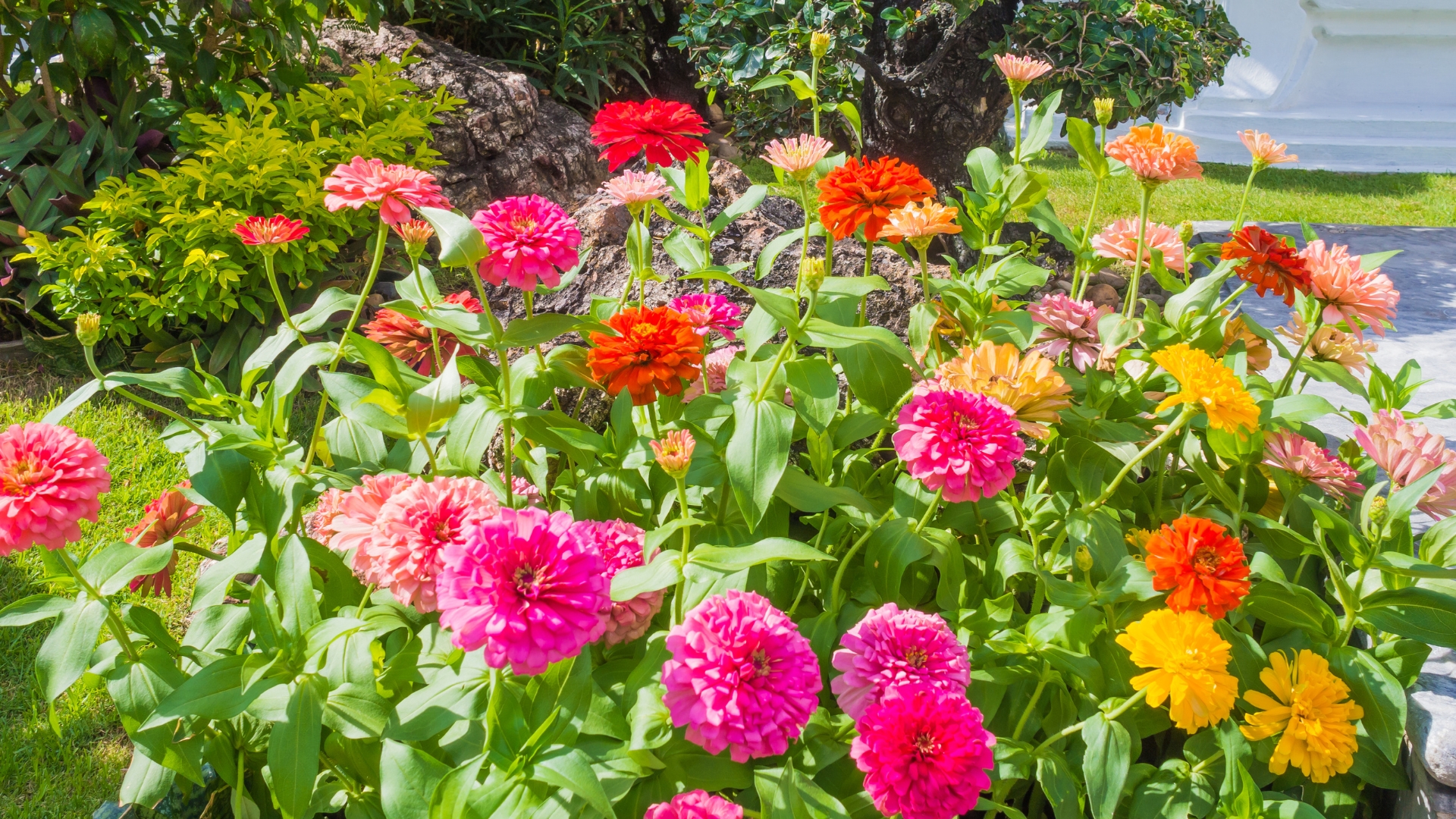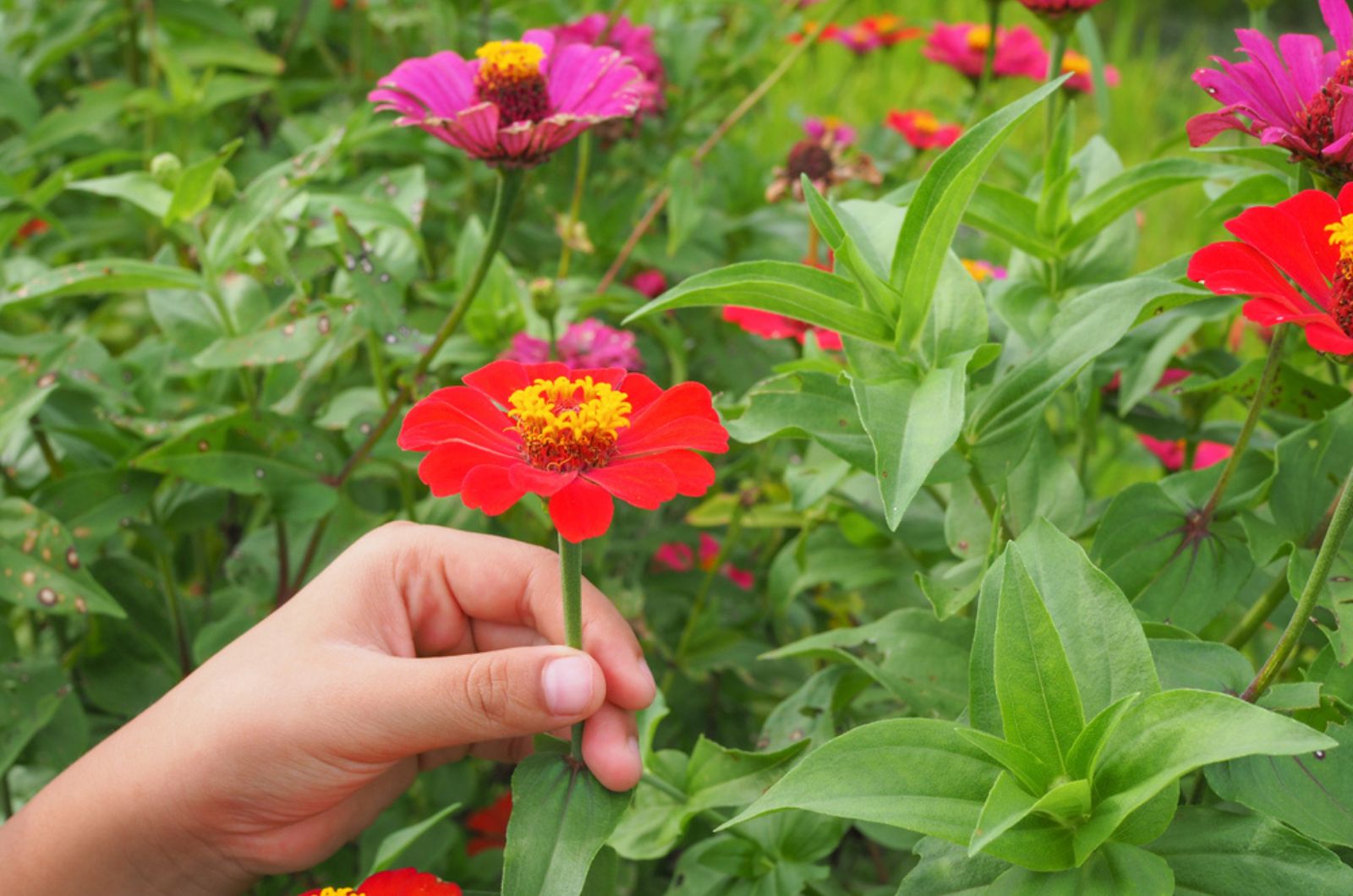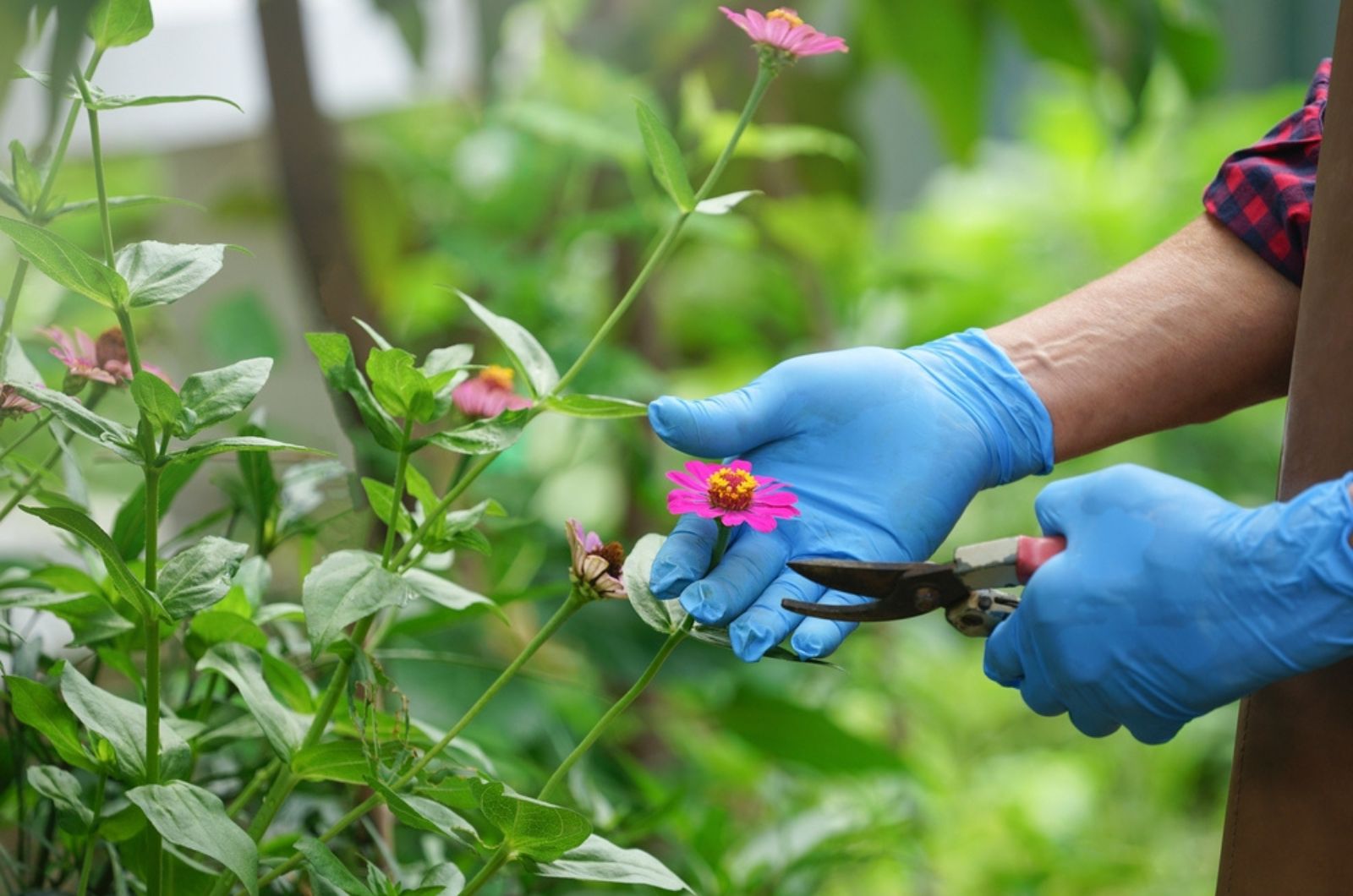The first reason why I planted zinnias in my garden is because I love their cut flowers. And trust me, the list of reasons is super long when it comes to these spectacular bloomers.
Zinnias aren’t drama queens unlike some other common outdoor plants (sorry roses). They’re annuals and will thrive and produce many blooms even with a bit of neglect.
I like to say that maintaining vigor in zinnias comes down to two things: a little water and a lot of sun. They’re indeed one of the toughest plants out there!
And once your flower beds are covered in colorful zinnias, the only thing left to do is harvest them. If this is your first time growing these plants, you should know that the more you pick, the more blossoms you’ll get.
But do you know when your zinnias are really ready for cutting? Again, these plants are the best because even this part is super simple:
All You Need Is The Wiggle Test
Huh? Yes, my fellow gardener, you’ll need to do some wiggling here! That’s actually the only step in this method.
So, put your hand about 8 inches below the flower and shake the stem gently.
Firm and upright stem = ready-for-cutting zinnia bloom
Admit it, this is the easiest equation you’ve ever seen!
A droopy and wiggly stem means that it needs more time to mature, so it’s not recommended to interrupt this process.
When I first heard of this method, I thought to myself there’s no way I’m gonna risk breaking my plant. But the curious grower in me whispered, do it or you’ll never know.
Look at me now, spending hours shaking my zinnias (and I haven’t broken a single one!).
And I Also Do This
You can do a few more things to get the most out of your zinnias. First, be patient! Some time ago, I used to wiggle each and every zinnia stem I had in my garden.
Then I figured out that the plants that are still in the process of opening the blooms are the best for harvesting. Zinnia stems that develop in clusters will produce blossoms even after you put them in a vase.
Don’t forget to wiggle them first!
I have to mention that zinnias can form short stems and low-growing blossoms or send up to 3-foot tall flower stalks. If you’re more into the latter, such as myself, here’s what you can do.
When my zinnias are still young (around 8-12 inches tall), I pinch off the top 3 inches of the stem. This way, I encourage the plant to produce more stalks and of course, more blooms.
And don’t skip the good old deadheading technique! Don’t mind the morbid name, it’s basically removing the spent flower heads from the plant to stimulate new zinnia growth.
Success is guaranteed! Last, but not least, enjoy your summer watching zinnia blossoms in the garden and vases!



